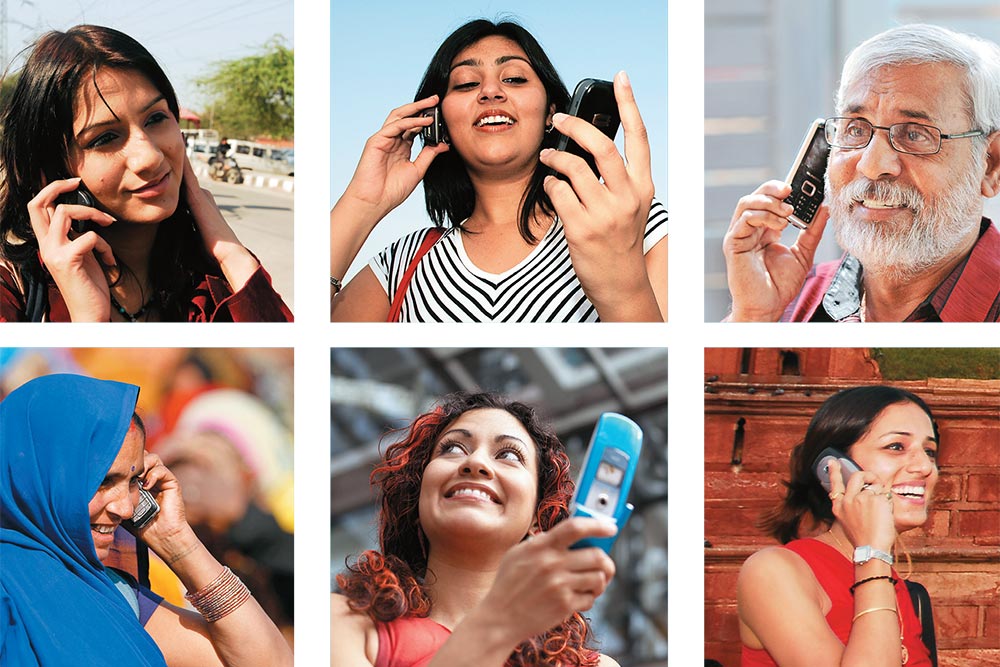After years of chasing new subscribers, mobile telecom operators have a revised target — loyal and profitable customers. “From the maniacal focus on customer acquisition, the emphasis now is on customer sensitivity,” says Himanshu Kapania, MD, Idea Cellular. What that means is operators will now reward users who stay with them and bring in the money. Idea has been offering customised calendars and a chance to meet its brand ambassador Abhishek Bachchan; Airtel is giving away Satya Paul accessories worth ₹5,000 to those whose postpaid bills exceed ₹2,000 a month. Airtel also selects the most suitable data and voice plans for its customers based on their usage patterns (through data analytics) and keeps them informed through SMS and e-mails.
Why this switch? Pure business compulsions, for one. The economics behind this change in focus — from customer acquisition to retention — is quite simple. Acquiring a subscriber costs anywhere between ₹120 and ₹140. This includes the cost of the SIM, verification, storage of customer data, dealer commissions and other logistical expenses involved in activating a new connection. On the other hand, servicing an existing user costs around just ₹8-9 every month. Clearly, the returns on investment are better if the same customer is serviced over a longer period than adding new subscribers at higher cost, only to see them flee for cheaper plans.
It started with marketing expenses as subscriber freebies and discounts came in for close scrutiny. So did sales and distribution (S&D) expenses. Distributors were interested in selling new SIM cards as they were far more profitable than selling recharge vouchers. They get to keep 20% as commission from selling SIM cards while recharge vouchers fetch them only 6.5-7%. Analysts point out that high trade commissions were a direct fallout of oversupply — up to 15 operators in some circles at one point.
Prices of new mobile connections hit rock bottom as retailers passed on some of their margins to consumers. One could pick up a new SIM for as low as ₹30 and it came with free talktime and SMSes worth that much or more. Not surprisingly, it made sense for prepaid users to keep switching to the next cheaper option than to stay with their existing operator. Rajiv Sharma, analyst at HSBC Securities, agrees that the high incentive for dealers to sell new connections led to ownership of multiple SIMs among mobile users. With nearly 98% of India’s mobile users on prepaid connections, it was one long party for everyone in the trade — it couldn’t last forever, though. “While it led to positive subscriber additions in the past, it was adversely affecting margins,” says Sanjay Kapoor, outgoing CEO of Bharti Airtel.
Leading operators began cutting down on incentives and commissions in the second half of 2012. As a result, new SIM card commissions are now almost at par with those for recharge vouchers. Airtel reportedly saved ₹100 crore each in the second and third quarters this fiscal year by cutting down on S&D expenses — commissions to dealers, distributors and retailers, besides expenses on owned and franchised outlets. “Now we are on S&D where we were probably a year back,” Kapoor recently said in a conference call after announcing the company’s last quarter results.
Operators have been terminating connections that are not in use for six months or more. That is clearly showing in the numbers — for the first time since mobile services started in 1994, subscriber additions have begun to slow down. India’s total mobile user base declined to 864.72 million in December 2012, a 9% drop from 950 million users in July 2012.
Subscriber churn numbers are coming down too. Airtel’s Q3 churn is down to 5.9% compared with 7.9% in the year-ago period. For Idea, the figure dropped from 10.7% to 6.9%. With reduction in churn, the focus will be more on retention. Kapania says if a customer stays on, not only does he gives more business though increased usage, but also becomes a spokesperson of the quality of its services. “To us, that is very important. That is why we are extremely focused on getting good quality customers,” he says.
This customer focus has also meant fresh investments in network quality improvement. Idea added more than 3,000 new sites in the second quarter to improve coverage and service quality. “The shift has started. From a pure price-led sector, telecom is now turning into a service and brand-led industry,” says Kapania. Airtel’s Kapoor agrees. “We have taken adequate corrective measures to make sure that the burn on S&D comes down and churn reduces. There is more emphasis on quality customers coming in, gaining revenue market share and in network investments,” he points out. With reduction in number of operators and dwindling competition, only that customer will be king who can talk more, surf more and stick to a single operator.











